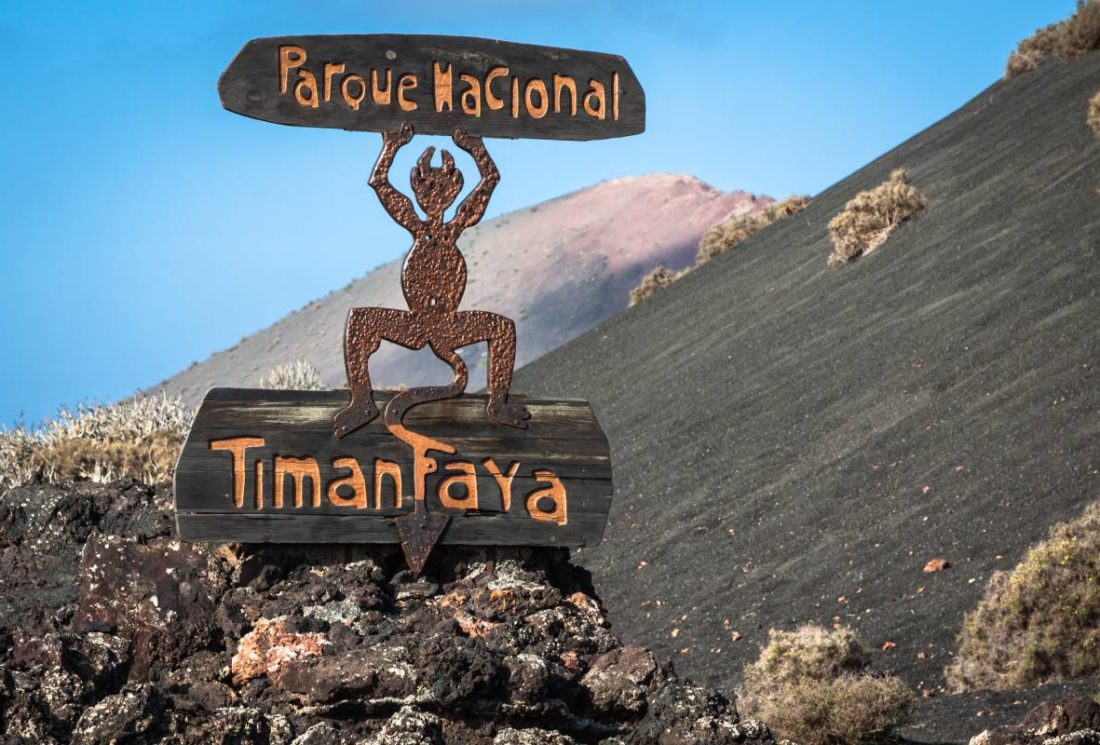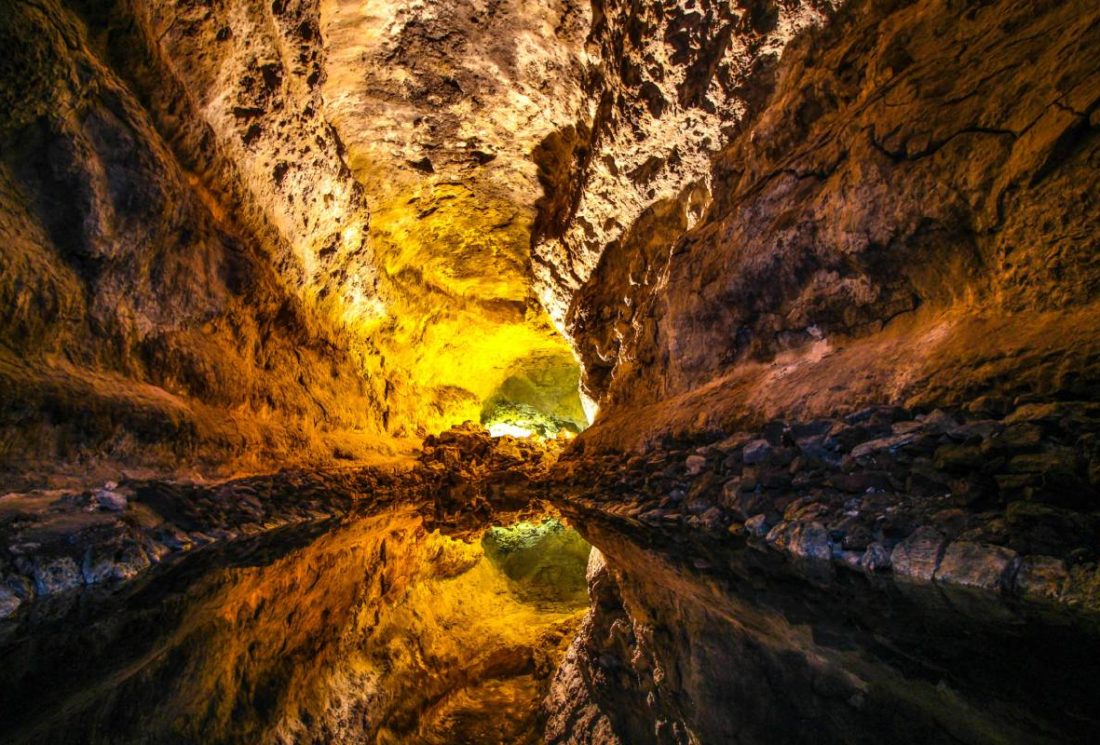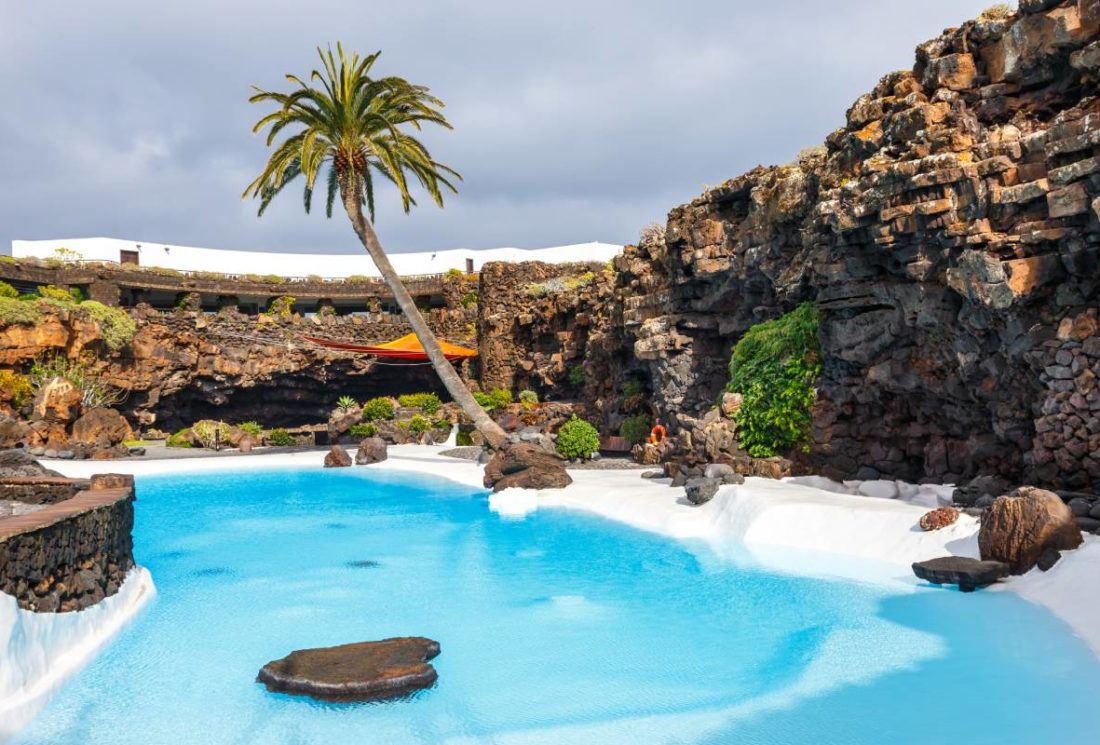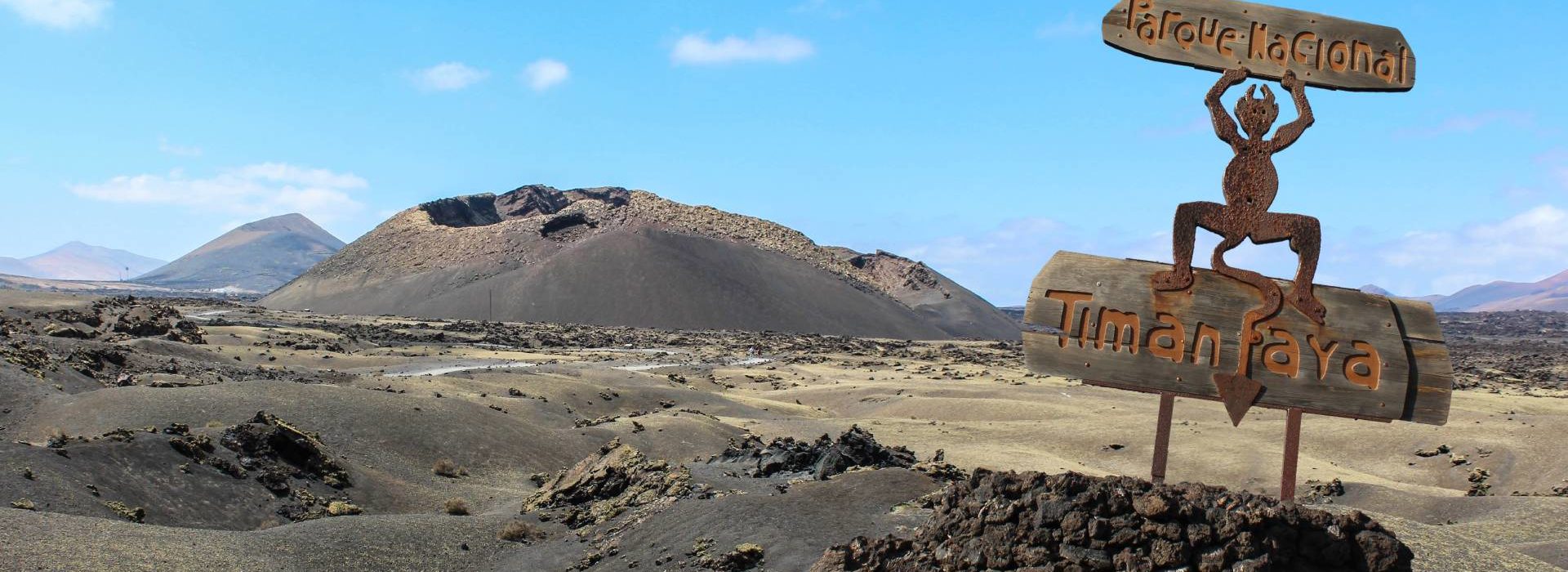
Lanzarote Travel Guide: Discover this Volcanic Island
A lunar landscape that is out of this world
Lanzarote is the fourth largest and most easterly of the Canary Islands. It is incredibly popular, attracting more than 3 million tourists a year, the majority of which head to the main resorts that are situated on the south coast.
It is the most family-friendly of the Canary Islands, especially in Playa Blanca, Puerto del Carmen, Playa De Los Pocillos and Costa Teguise.
The Spanish island is located in the Atlantic Ocean, just off the coast of North Africa. This ensures it is a year-round destination, perfect for summer holidays but also ideal if you are looking for some winter sun.
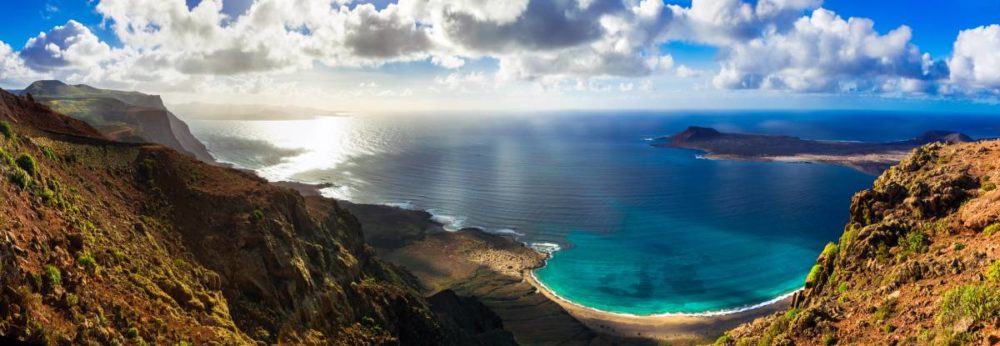
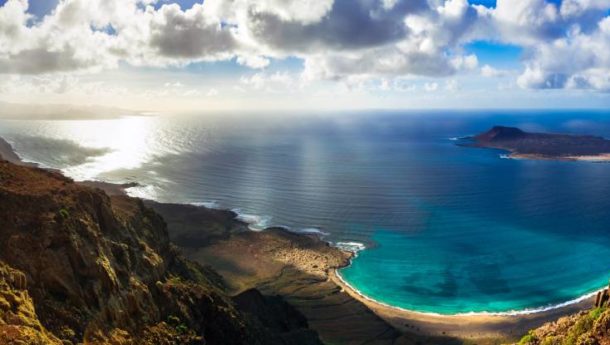
Lanzarote at a glance
This island, which is a UNESCO Global Geopark, was formed more than 20 million years ago from volcanic activity. To this day, it has avoided overdevelopment, retaining its natural beauty and incredibly unique scenery.
If you would like to see this volcanic landscape with your own eyes, then read on to find out what you can expect from a holiday to Lanzarote.
Travel advice when visiting Lanzarote
Lanzarote is a safe destination and has low crime rates. However, you should take out travel insurance just to be on the safe side. You should also be aware of your surroundings and ensure that valuables are either left in the safe in your room or if you do carry anything on you, it isn’t on show.
Safety tips
It is very hot and sunny but it can also be windy which is deceiving. Don’t forget to wear sun cream, top it up regularly and drink plenty of water, even if it feels a bit cooler.
Transport
You may like to hire a car while you are in Lanzarote. The island is relatively small and it is easy to drive around, enabling you to explore at your own pace.
Alternatively, there is a public bus service – although you’ll need to allow more time to travel this way and be aware that it will only take you to certain parts of the island.
Average accommodation costs
Accommodation is around 76€ a night for one person and 151€ for two people.
The best beaches in Lanzarote
There are more than 100 beaches on this island. The unspoilt, sun-drenched coastline has become the main draw for many visitors. Surprisingly, for a volcanic island, many stretches of the shoreline have gold or white sand rather than black. Here are three of the best beaches:
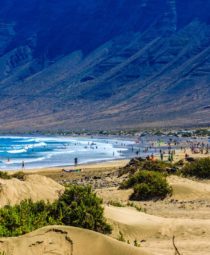
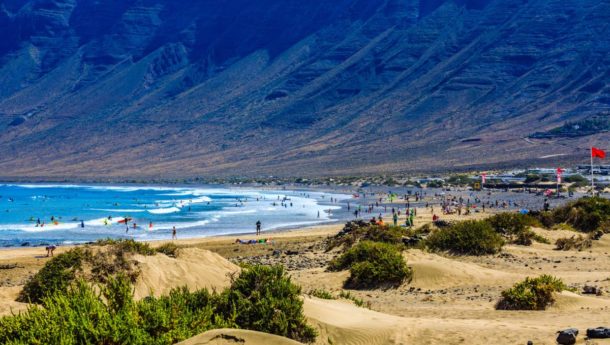
Playa de Famara
Rather than people swimming, you’ll see surfers riding the waves in the turquoise water off this three-mile stretch of soft sand. The windy conditions produce large waves that attract both beginners and more advanced surfers. If you haven’t ridden a wave before, you’ll find surf schools in neighbouring Caleta de Famara. This curved bay, which is situated in the northwest and backed by high cliffs, is one of the longest and most popular on the island.
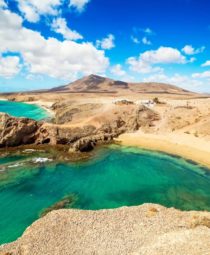
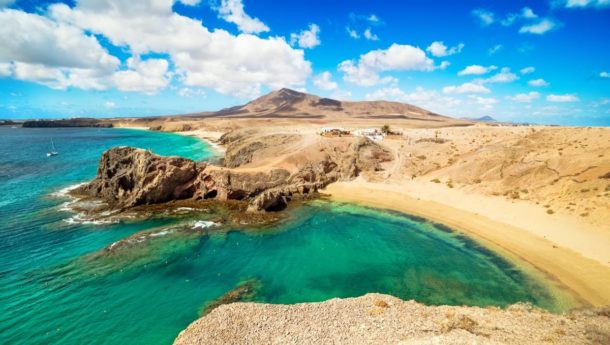
Playa de Papagayo
These beaches, situated in Los Ajaches National Park, are among the best-known and most beautiful on the island. The soft golden sand is sheltered by cliffs while the Ajaches mountains provide a dramatic and breathtaking backdrop. The beach is split into sections which are separated by volcanic rock, the main one is by Punta del Papagayo. The clear, turquoise water is incredibly calm, making it ideal for families with young children and perfect for snorkelling. This part of the coastline also benefits from the best weather on the island due to its location in the south.

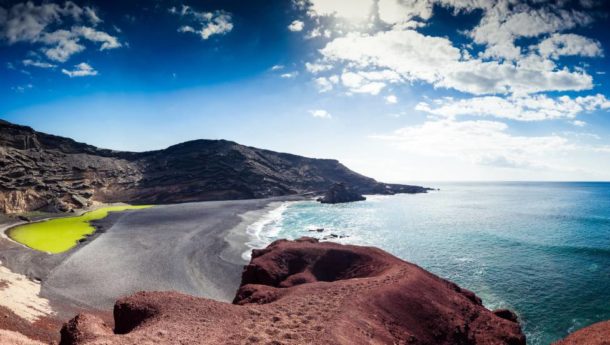
Playa del Charco de los Clicos
You won’t be sunbathing on this black sand, that is situated to the south of Timanfaya National Park, but you will want to see it, it is the most unique on the whole island. You actually can’t walk on the sand or swim in the sea at all; instead, you’ll head for the viewing platform to take in the spectacular volcanic beach. The first thing you’ll notice is the array of colours, from the jet black sand and the deep blue water that laps against it to the green lagoon and the red cliffs.
Excursions in Lanzarote
The island is relatively small, you can drive from north to south in just over an hour and east to west in half an hour. This means, wherever you choose to base yourself, it is easy to explore the whole of Lanzarote.
From the north of the island you can take a short ferry ride to Graciosa Island. These depart every 30 minutes from the port of Órzola. Once off the boat it is a 45-minute walk to Playa de las Conchas, one of the most unspoiled and remote beaches. Here the golden sand is lapped by azure water – while it is beautiful you’ll be unable to get in here. Alternatively, the water in Playa la Francesa is calm and ideal for swimming.
Lanzarote is also situated just a short distance from Fuerteventura. There is only one route, Playa Blanca to Corralejo, which departs every day and takes 25 minutes. As well as being the most popular, this is the second largest of the group of islands.


Food and drink in Lanzarote
You’ll find a wide variety of Spanish and Mediterranean dishes on many menus in Lanzarote, alongside the more traditional Canarian food.
Papas Arrugadas which are Canarian potatoes, are incredibly popular. This is served with the traditional sauce, Mojo. If this is red it is hot, while green is more garlicky. You can also dip these in aioli or garlic mayonnaise.
Seafood lovers will be in heaven, fresh fish is readily available on this island – this is often served whole alongside Canarian potatoes. Grilled octopus is a speciality and limpets, which are known as lapas, tend to be served grilled with green mojo sauce for dipping. When it comes to meat, goat is popular here and can be sampled in carne de cabra, which is a stew.
You’ll no doubt come across gofio while in Lanzarote – it is a toasted flour that is used in both savoury and sweet dishes across the Canary Islands, including ice cream.
You don’t want to miss El Diablo Restaurant. It is situated in Timanfaya National Park and uses the heat from the volcano to cook meat and fish. This volcanic barbecue will certainly be a unique experience.
To wash it down you’ll be drinking wine. There are wineries across the island including the modern Bodega Stratvs, Bodegas El Grifo, which is the oldest on the island, and La Geria, a black volcanic ash vineyard that can be found alongside the national park.
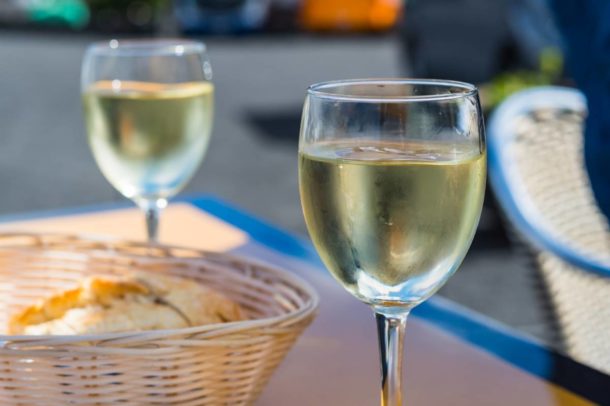
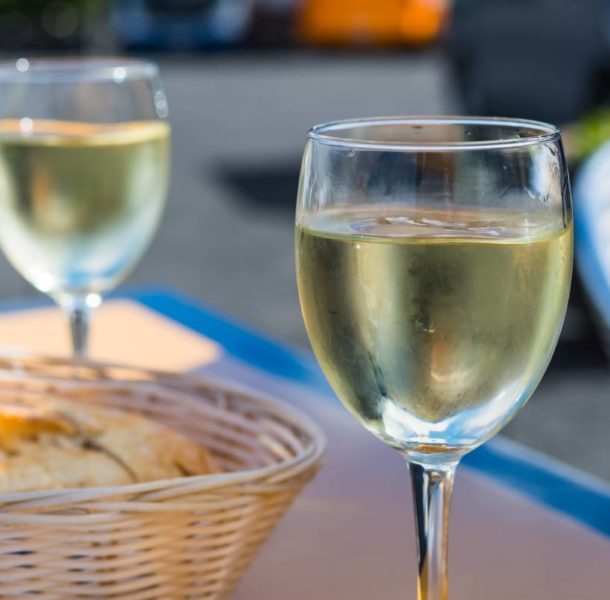
Lanzarote nightlife
Arrecife and Puerto del Carmen offer the best nightlife on the island. In the capital you’ll find more traditional Spanish bars where you can drink like the locals.
If you are in the resort of Puerto del Carmen, the party is situated on the main strip, Avenida de las Playas where you can dance until the early hours. Many of the clubs here don’t open until late, around 10 or 11pm and won’t be busy until around midnight.
Although not as lively, there are bars and live music in Playa Blanca and Costa Teguise.
If you are looking for something a little more unique, then head for Lagomar Cave in Nazaret. This bar is situated around a pool in a cave in an old quarry. Take a seat, order a cocktail and enjoy the chillout tunes.
Shopping in Lanzarote
If you fancy treating yourself to a souvenir or two, then head for the capital, Arrecife where Calle León y Castillo is the main shopping street.
Alternatively, popular resorts for shopping are Playa Blanca, Costa Teguise and Puerto del Carmen. While Deiland Shopping Centre in Playa Honda is the largest indoor shopping centre.
Teguise Market is situated in the island’s former capital and is the largest in Lanzarote. It takes place every Sunday and sells a range of items from handmade goods to local produce. If you visit, make sure you leave early and don’t be afraid to haggle.
Lanzarote culture and art
The island’s best-known artist, environmentalist and architect, César Manrique’s work can be found throughout Lanzarote. He designed the majority of the island’s attractions, ensuring they complemented the landscape and played a part in ensuring there isn’t any over-development.
‘The Art, Culture and Tourism Centres’ he created include: Casa-Museo del Campesino, Cueva de los Verdes, Jameos del Agua, Jardín de Cactus, La Casa Amarilla, International Contemporary Art Museum, Mirador del Río, Museo Atlántico – the underwater museum and Montañas del Fuego / Timanfaya.
Make sure you look out for the motif that the artist created at each place including the fire devil at Timanfaya, the crab at Jameos del Agua and the fish at Mirador del Rio.
His home, which can be found in Haría, is today dedicated to his life and work. As you wander around the property, which is built into boulders in a lava field, you’ll pass pools and lava bubbles linked by passages.
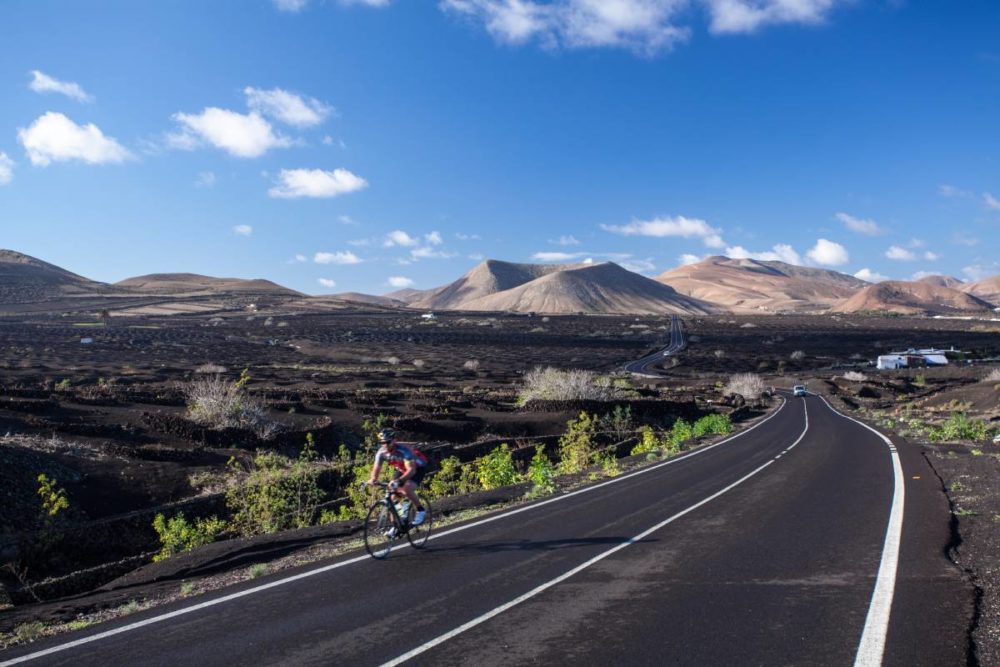
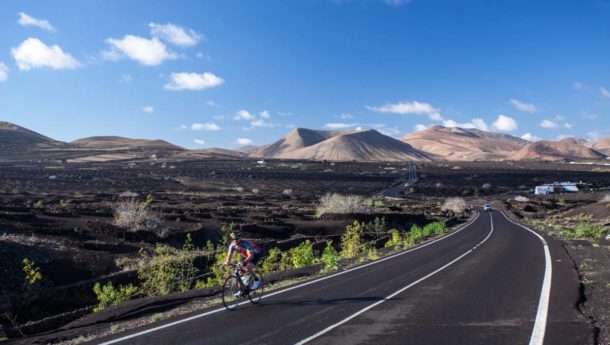
Outdoor adventure in Lanzarote
The windy weather conditions and rugged terrain couple together to make this island ideal for a range of outdoor activities.
The most popular is cycling, with many taking the route from Tabayesco to Mirador de Haria.
In the north of the island, around the town of Haría in the Valley of 1,000 Palms, you’ll find Mirador del Río. This lookout point, designed by César Manrique sits at 479 metres, on the highest part of the island. Make your way up here to enjoy breathtaking views across to La Graciosa. This is surrounded by Risco de Famara, the tallest mountain range on the island and one of the best places for hiking against the most stunning backdrop.
Meanwhile, out on the water, you can try surfing, windsurfing, kite boarding and paddle boarding. There is also a whole world to discover beneath the surface too, which is why you might like to put on a wetsuit or snorkel to see the volcanic seabed. Puerto Del Carmen and Playa Blanca are two of the best places for snorkelling and scuba diving. In the latter you can explore Museo Atlántico – Europe’s first underwater museum.
Off-the-beaten track
There is so much to see and do in Lanzarote but once you have seen the top attractions, don’t forget to spend some time off the typical tourist trail and see another side of the island too.
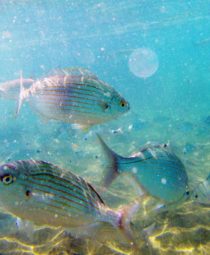

Submarine Safari
Would you like to go underwater and discover the world beneath the surface of the Atlantic Ocean without getting wet? You can on a Submarine Safari. Step inside and you’ll dive down up to 30 metres where, through the portholes, you’ll come face to face with marine life such as rays, barracuda and parrot fish that can be seen swimming in and around shipwrecks. The trip, that departs from Puerto Calero, lasts for an hour and commentary is provided so you can learn more about Lanzarote’s sea life.
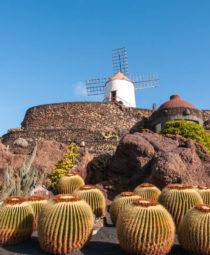
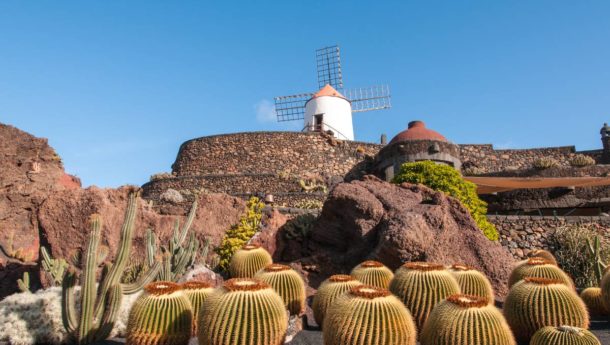
Jardín de Cactus
In Guatiza, in the north of the island, you’ll find The Cactus Garden. Situated in an old quarry, which was designed with the help of César Manrique, is 10,000 different plants across more than 1,000 species. The gardens are in the heart of the island’s cactus country and the space is entirely themed around the spikey plant. After passing an eight-metre high cactus sculpture you’ll see it throughout the park on door handles and within gates.
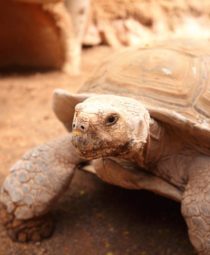
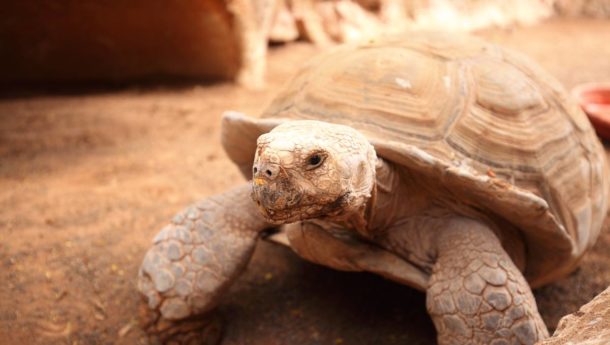
Rancho Texas Park
This Texan-themed park in Puerto Carmen is fun for all the family – kids and grown-ups alike will love meeting the wide variety of animals that call this home. Here you can see the rare white tiger, attend presentations to learn more about the creatures and take part in the sea lion and dolphin interaction. There are also pools and waterslides where you can cool down as well as The Indian Lagoon, which is surrounded by tipis, for canoeing. Plus, there are pony rides and a Reptilarium where you can see Komodo Dragons.
Best times to go to Lanzarote
The island benefits from its location just off the coast of North Africa, so is generally always warm and sunny. The average temperature is 22°C with the hottest months, July and August, around the mid-20s. May and September are good times to visit, because they are either side of the peak season, so you can avoid the crowds.
However, Lanzarote is a year-round destination and ideal if you are looking for some winter sun. Although rain is uncommon, there is a chance of it from December to March and it does tend to be quite windy throughout the year.
Now you know exactly what to expect from this volcanic Canary Island, you can start planning to go and see the unique lunar landscape for yourself.
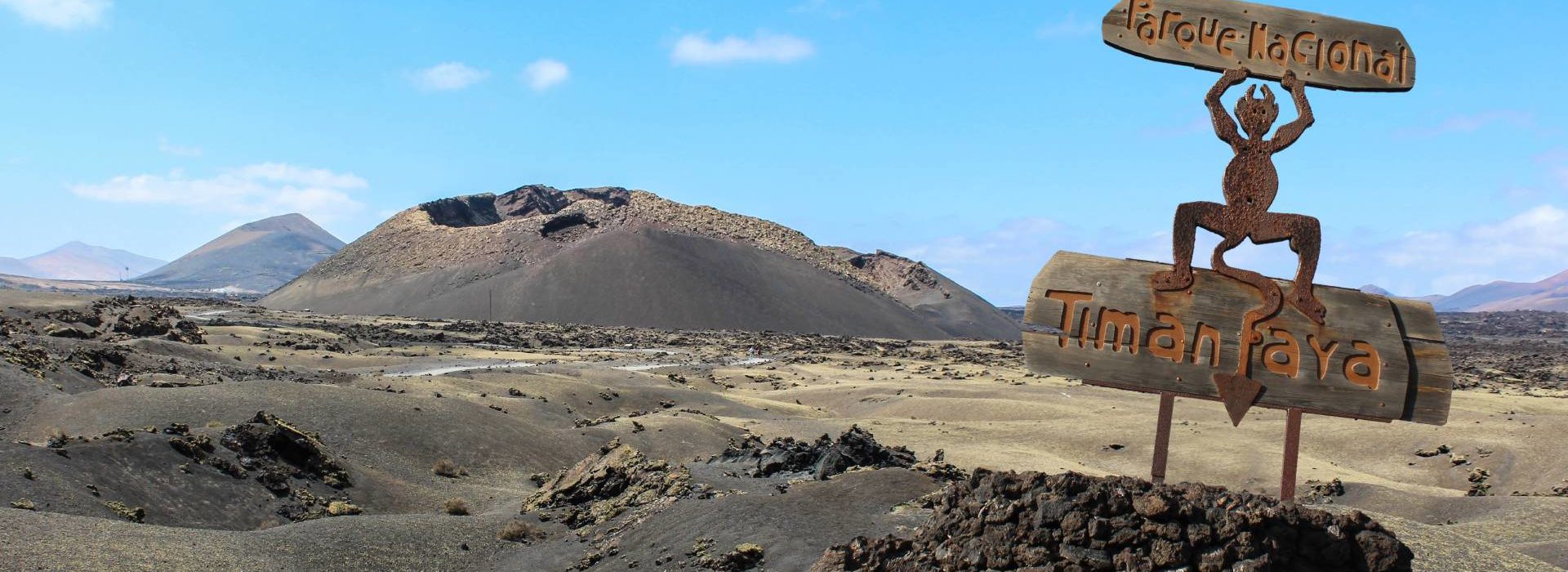
Find the perfect Lanzarote holiday
Let us help you find the perfect holiday destination for you
View all Lanzarote holidays